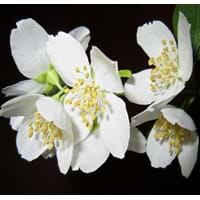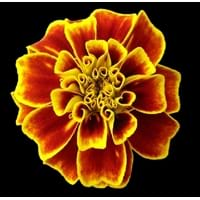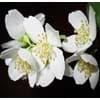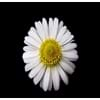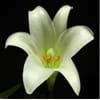Color
White, Yellow
Orange, Yellow
Color Meaning
White - Purity and Innocence, Yellow - Happiness and Friendship
Orange - Satisfaction and Passion, Yellow - Happiness and Friendship
Fragrance
Aromatic
Aromatic
Number Of Petals
Not Available
Line
Not Available
Not Available
Silhouette
Not Available
Not Available
Blossom Texture
Not Available
Not Available
Form
Not Available
Not Available
Sunlight
Full Sun
Full Sun
Type of Soil
Loamy
Clay, Loamy, Sandy
Essential Fertilizers
Phosphorus
Lime stone, Potassium
Common Pests and Diseases
List of Pests
Aphids, butterflies, Caterpillars, Mites, moths, Scale, Whiteflies
Aphids, moths, Scale, Slugs, Snails, Thrips, Whiteflies
List of Diseases
blight, Nematodes, Wilt
Bacterial leaf spot or blast, Gray Molds, Powdery Mildew, Root Rot
Bloom Time
All Summer Season, Spring Season, Winter Season
All Summer Season, Fall Season, Spring Season
Origin
China, Himalayas, Tibet
Mexico, North America, South America
Interesting Facts of
- Jasmine releases intoxicating perfume at nightand thus also known as the "Queen of the Night" in India.
- The name Jasmine is derived from the Persia 'yasmin' which means a fragrant flower.
- Marigold is believed to be the Herb of the Sun.
- Marigolds were used in Welsh culture to predict climatic conditions.
Lifespan
Perennials - a plant that lives for three or more years
Annuals - complete its full life cycle in one growing season
Uses
Not Available
Not Available
Health Benefits
Good remedy for Diarrhea, Reduces risk of cancer
Best remedy for Cough & Cold, Prevents Intestinal Ulcers, Reduces risk of cancer
Medicinal Uses
Acts as a antidepressant, Acts as a antispasmodic, Acts as an Astringent
Acts as an anti-inflammatory, Acts as an antioxidant
Culinary Uses
Used as flavor food in deserts and ice creams
Used in salads, soups and sandwiches
Cosmetic Uses
Best for Dry sensitive skin, Softens skin, Used in creams, hand lotions and in essential oils, Used in Perfumes, Used in shampoos and soaps
Used in creams, hand lotions and in essential oils, Used in Perfumes, Used in shampoos and soaps
Occasional Uses
Decoration, Wedding
Wedding
Allergy
Asthma, Headache, Itching, Runny nose, Sinus pain, Sneezing
Contact Dermatitis, dry or cracked skin
Scientific Name
Jasminum
Tagetes
Sub kingdom
Tracheobionta
Tracheobionta
Super Division
Spermatophyte
Spermatophyte
Division
Magnoliophyta
Magnoliophyta
Order
Scrophulariales
Asterales
Class
Magnoliopsida
Magnoliopsida
Family
Oleaceae
Asteraceae
Sub Family
NA
Asteroideae
Genus
Not Available
Not Available
Number of Species
Not Available
Not Available
More about Jasmine and Marigold Facts and color
You must be curious to know more about Jasmine and Marigold facts and color. flowers.comparespecies.com will let you know all the Interesting Facts about Jasmine and Marigold. Jasmine comes in White, Yellow colors whereas Marigold flowers are with Orange, Yellow colors. Other Jasmine and Marigold facts will definitely amuse you.
Jasmine and Marigold growing conditions
Absolute growing condition is the only key to keep plants in good health and in good shape. Let’s learn about essential Jasmine and Marigold growing conditions. Jasmine requires Full Sun and Enough watering with 5.50 of Loamy soil. Marigold needs Full Sun and Enough watering with 5.50 of Clay, Loamy, Sandy soil. Get other Jasmine and Marigold facts in the sections below.
Jasmine and Marigold Facts
Want to know about Jasmine and Marigold facts? Get all the Jasmine and Marigold facts here.
Jasmine and Marigold Classification
After knowing about various Jasmine and Marigold facts, let's study their classification. Based on genetic and physical features, Jasmine and Marigold classification starts with knowing their scientific name. The scientific name of Jasmine and Marigold is Jasminum and Tagetes respectively. Jasmine belongs to Oleaceae family whereas Marigold falls under Asteraceae family. Also check out Flowers by Color so as to plant colorful aroma in the garden.
